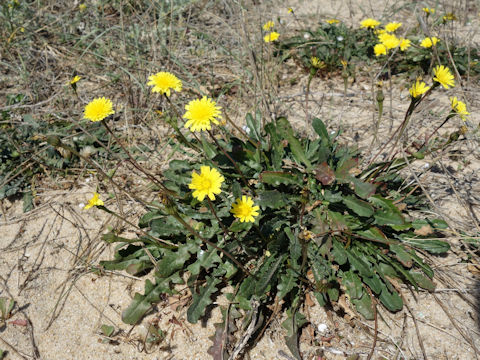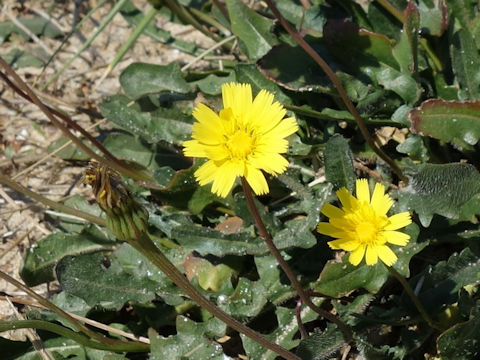 |




|

|
[bp¨æÑkAtJª´YÅ·ªA¢E̽ÌêÅà©é±ÆªÅ«Ü·Bu½ñÛÛvÉÄ¢ÄA³ÍQOZ`ÙÇÅ·BtÍ·³Q`PTZ`AODT`QZ`ÅASܽÍóôµAÎFÅ[bgð`¬µÜ·BQ©çX²ëAs¸É½¾êÂ̪Ôð穹ܷB¬ÔÍ©FÅAæ[Éͪ èÜ·BÊÀÍ~óÌÊÅAÑó̥Ѫ«ܷB
|

|
LNÈ^||hL®Ì½NÅAw¼Í Leontodon taraxacoidesBp¼Í Lesser hawkbitARough hawakbitB
|

|
The Lesser hawkbit (Leontodon taraxacoides) belongs to Asteraceae (the Aster family). It is a perennial herb that is native to Europe and North Africa but it can be found in many other places across the globe. This herb is dandelion-like and its height is about 20 cm. The leaves are 2-15 cm long, 0.5-2.5 cm wide, entire or lobed, green in color, and forms a rosette. The solitary flower head blooms atop of stem from February to September. The florets are yellow with toothed tips. The fruit is a cylindrical achene with a pappus of hairs.
|

|
|gKEuK§uGV
|[fCÝvÉÄA2019N0329úBeB(photo by Jon Suehiro)
|

